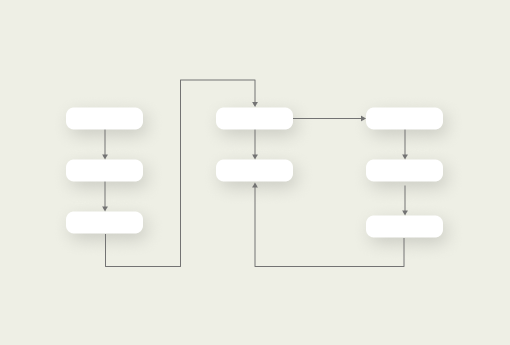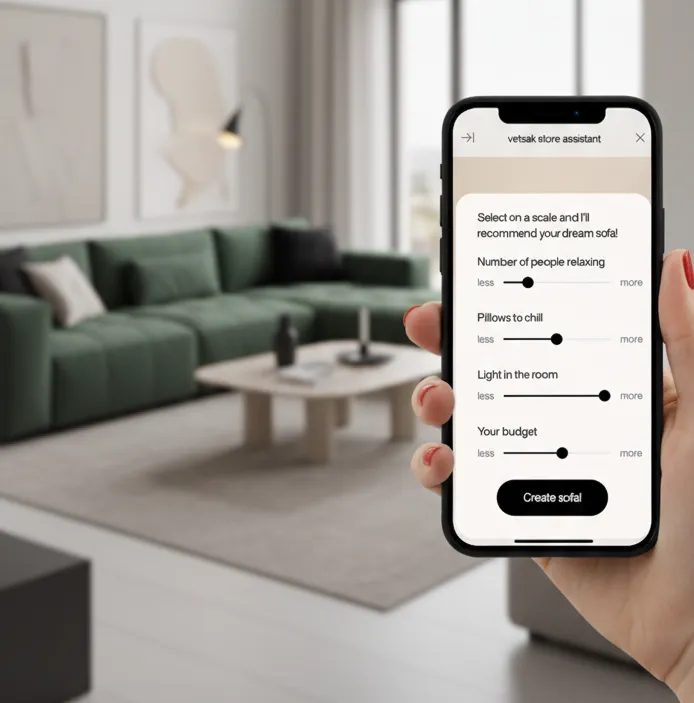Instead of adding another chatbot, we introduced something smarter for Vetsak – a context-aware, agentic assistant seamlessly embedded in their 3D configurator.
It transformed conversation into a guided experience.
By asking about lighting, pets, and room size, it guided users toward the perfect combination of fabrics, layouts, and accessories — all while keeping the experience beautifully simple and visual.
How we achieved it: limiting user indecision
Goal-Oriented Workflow
The process asks about the user's needs (e.g., "What is the room like?"), not product specifications.
It acts as a smart advisor, responding to user goals and concerns to provide precise and relevant purchase advice. This agentic logic is designed by an AI Business Analyst and is distinct from the standard user journey.
Intuitive UX & GUI
Clicking, not writing is the primary interaction.
Visuals (photos, video) replace heavy text.
A 3D Configurator presents choices and updates in real-time, building confidence.
Why it matters: transforming the user journey
Reduces Cart Abandonment
Effective, real-time recommendations solve the main cause of abandonment – decision paralysis and uncertainty.
Tangible Results
Interactive AI tools guiding the decision process can reduce abandonment rates by 15–40%.
Builds Confidence
The immediate visual feedback from the configurator allows customers to feel certain about their choices without needing to leave the page for external research, resulting in a potential 15–25% reduction in abandoned carts.














